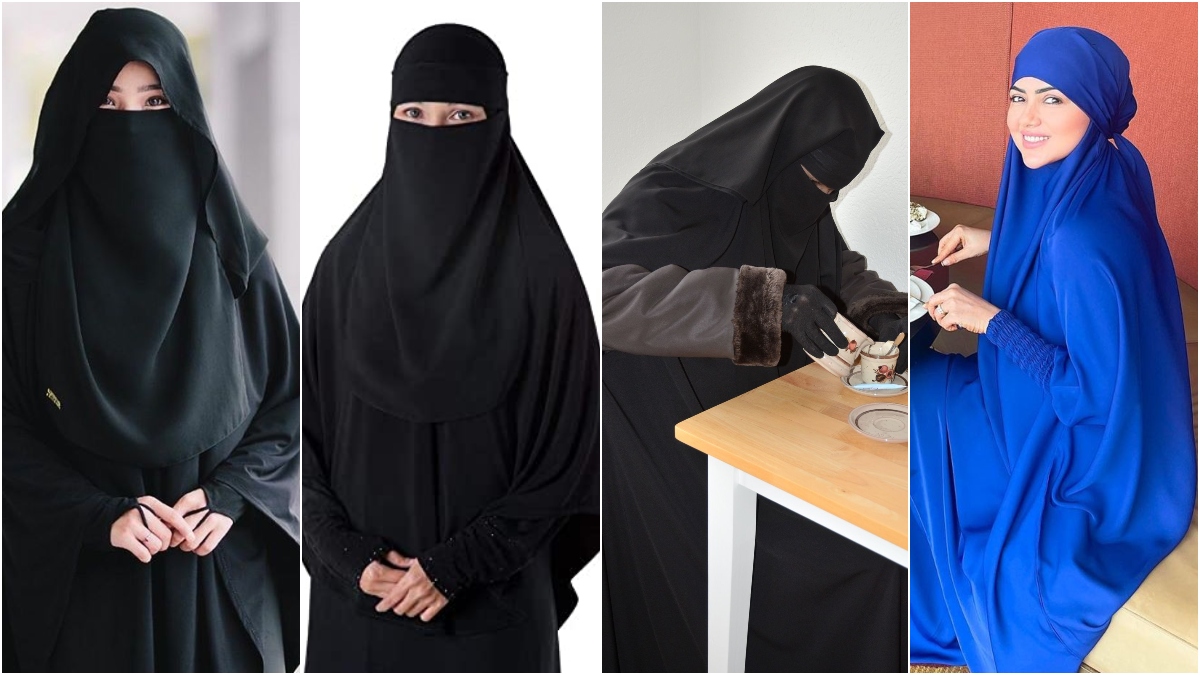Karnataka's hijab controversy has become a political issue. Along with this, people's curiosity about 'hijab' has also increased, what is it and how are niqab and burqa different from it. For the unversed, hijab is a traditional dress worn by women of Muslim faith, but in many places in the world, burqa and niqab are also worn in place of hijab.
Let us know what is hijab and how is it different from niqab and burqa.
Hijab
From the perspective of traditional dress, a hijab is a scarf worn by Muslim women to cover the head and neck. Most of the girls in the world who have to work in the direction of job, studies and sports, they give more importance to the hijab. In fact, the eyes, face and forehead are kept open in the hijab, which gives freedom in talking and working. Young generation hijab is preferred in most of the Muslim countries of the world. Hijab kurta can be worn with salwar as well as with skirt, jeans or other modern clothes.
Burqa
Burqa is a dress covering the body from top to bottom. In many states of India, women use it while leaving the house. It is often divided into two parts. A burqa comes to the hands, the eyes are open in it. The second burqa covers the head and face and goes up to the feet like a kurta or gown. It is also called an abaya. In this, a separate sheet is tied to cover the head, which also covers the face. In both of these, the part of the eye is kept open so that it can be seen.
Niqab
Wearing a niqab involves the exercise of covering only the head and the face. The eyes remain is open. It does not cover the entire body of the woman like the abaya.
Chador
Chador is a full-body cloak. Sometimes a cap is also attached to the sheet and a net is also attached to cover the eyes. It is wrapped around the head and it is wrapped around the body like a shawl. Old age women who are unable to wear burqa, they wear chador.
Shayla
Shayla is a long scarf that is wrapped around the head. It may or may not be pinned around the head.
Al-Amira
It frames the face when worn. A snug, elastic base cap can be used to cover the hair before putting on the hijab. Since it is already made to frame a person's face, all a woman has to do is wear it over her head.
Khimar
It is cape-like and covers the head, neck and shoulders. Like an Al-Amira, it also frames the face, but instead of draping a few inches below the shoulder, the Khimar also covers a woman's arms and most of her torso.
Different laws regarding niqab and hijab
Even though there is a controversy over the hijab in an educational institute in Karnataka, in many Muslim and European countries, laws have been made regarding it so that the situation of controversy does not arise. In Saudi Arabia, women are mandated to leave the house wearing hijab and burqa. Wearing hijab is mandatory in Iran. There is no law regarding hijab in Pakistan, but most of the women there like to wear burqa, niqab and hijab. Although Indonesia is a Muslim majority country, women here have the right to decide whether they want to wear hijab or niqab or not. On the other hand, if we talk about European and non-Muslim countries, the niqab burqa is banned in many countries.
Burqa and niqab are completely banned in public places in France and Denmark. Wearing a mask in a public place is banned in China too. Government officials, employees, judges and soldiers are banned from wearing the niqab and burqa in Germany. In the Netherlands, burqa and niqab are prohibited in places where identity cards are asked to be shown, such as airports, cinema halls, schools and other government institutions. Hijab and niqab are also banned in Italy. In Belgium and Sri Lanka, it is forbidden to cover the face completely.

